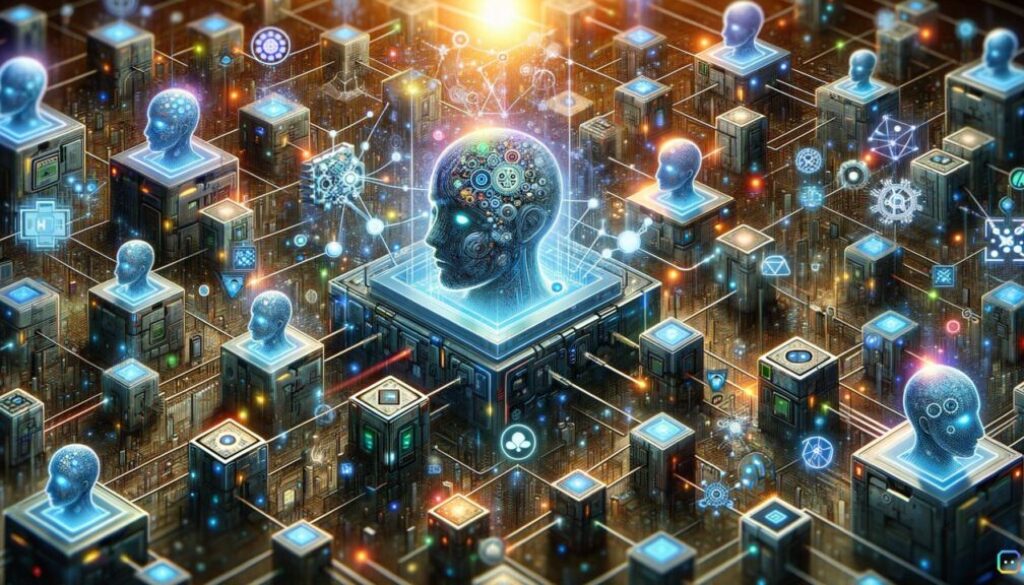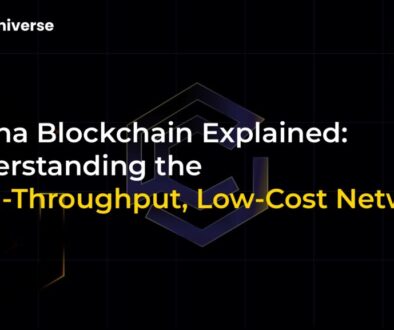Rise of AI DApps in Decentralized Ecosystem

Rise of AI DApps in Decentralized Ecosystem
The digital landscape is constantly evolving, and the latest seismic shift is happening at the intersection of Artificial Intelligence (AI) and blockchain technology. AI-powered decentralized applications (DApps) are rapidly gaining traction, carving out a significant niche within the Web3 space. This surge isn’t just a fleeting trend; it signals a fundamental change in how we interact with decentralized systems, posing a potential challenge to established sectors like gaming and Decentralized Finance (DeFi).
AI DApps: A New Powerhouse in the Decentralized World
Recent data paints a clear picture of this ascent. According to industry analytics from DappRadar, AI DApps have witnessed a remarkable surge in user activity. In April alone, they captured an impressive 16% dominance in the DApp landscape, hot on the heels of gaming and DeFi, which currently stand at around 21% each. This isn’t just a marginal gain; it’s a significant leap, indicating a growing appetite for AI-driven solutions in the crypto space.
The numbers speak volumes. Back in January, AI DApps already boasted 2.2 million active wallets, a figure that notably surpassed SocialFi applications. This rapid growth in Web3 AI adoption highlights a clear user demand for intelligent, decentralized services. This growth isn’t just about numbers; it’s about a tangible shift in daily active wallets gravitating towards these innovative applications.
Leading the Charge: Examples of AI DApp Innovation
Several pioneering AI DApps are at forefront of this movement, showcasing the diverse utility and engagement potential of AI in Web3:
- Dmail Network: An AI-powered decentralized messaging service, Dmail Network is recognized as one of the top AI-integrated DApps. It aims to redefine Web3 communication by leveraging AI for enhanced functionality and user experience.
- LOL (lol.social): This platform is another example of how AI can be integrated to create engaging user experiences within a decentralized framework.
- World.Fun: Gaining traction for its innovative approach, World.Fun demonstrates the broad appeal and utility that AI can bring to the DApp ecosystem.
These platforms, among others, are attracting users by offering novel solutions and enhanced engagement, setting them apart from more traditional DApp offerings.
The Driving Force: Innovation and Utility in AI DApps
What’s fueling this impressive growth? The answer lies in the unique blend of innovation and utility that AI brings to the blockchain. AI algorithms can significantly enhance user experiences, automate complex blockchain operations, and unlock new functionalities previously unimaginable in a decentralized context.
AI’s ability to process vast amounts of data, learn from user interactions, and provide personalized experiences makes DApps more intuitive, efficient, and engaging. For instance, Dmail Network’s integration of AI is not just a feature; it’s a core component aimed at revolutionizing how users communicate and manage information in a decentralized manner. This focus on tangible benefits is a key reason for the increasing popularity and user engagement seen in AI DApps compared to some traditional gaming and DeFi applications, which have recently seen a slight decline in activity despite still leading the market.
Industry experts and platforms like DappRadar have identified AI as a major growth sector within Web3, even suggesting it could be a potential catalyst for the next bull market. The synergy between AI’s intelligence and blockchain’s transparency and security creates a powerful combination that resonates with users seeking more sophisticated and efficient decentralized solutions.
Beyond the Hype: Real-World Impact of AI-Powered DApps
The applications of AI DApps are not confined to niche crypto communities; they are beginning to demonstrate real-world impact across various sectors. By merging blockchain’s inherent security and transparency with intelligent automation, AI DApps are unlocking new possibilities:
- Finance (DeFi): While DeFi DApps offer alternatives to traditional financial services based on trust and immutability, AI can further enhance these platforms. AI can provide advanced risk assessment, automated trading strategies, personalized financial advice, and improved fraud detection.
- Healthcare: In healthcare, AI DApps can contribute to more secure and efficient data management. AI algorithms can also be used for predictive analytics, such as forecasting medical cases or predicting disease spread, aiding in more effective resource allocation and public health responses.
- Social Media: AI can power decentralized social media platforms with enhanced content curation, personalized feeds, and more sophisticated moderation systems that are resistant to centralized control.
- Smart Contracts: AI can make smart contracts even smarter. By integrating AI, smart contracts can become more adaptive, capable of handling more complex conditions, and executing agreements with greater intelligence and efficiency.
AI’s role extends to personalizing user experiences across all these applications, making Web3 more accessible and user-friendly for a broader audience.
The Path Forward: Opportunities and Hurdles for AI in Web3
The future of AI in Web3 looks incredibly promising, with predictions that AI agents could revolutionize the space by 2025. These autonomous agents, powered by AI and operating on decentralized networks, could manage assets, execute tasks, and interact with other DApps with unprecedented efficiency and autonomy.
However, the journey is not without its challenges. Several hurdles need to be addressed to realize the full potential of AI DApps:
- Regulation: The regulatory landscape for both AI and cryptocurrencies is still evolving. Clearer guidelines will be necessary to foster innovation while mitigating risks.
- Centralization Concerns: While DApps are decentralized by nature, AI models often require significant computational resources and data, which can lead to centralization risks if not carefully managed. Ensuring AI components remain as decentralized as possible is crucial.
- Data Privacy and Bias: AI systems rely on data. Protecting user privacy and ensuring that AI algorithms are free from bias are paramount ethical considerations, especially in a decentralized environment that champions user sovereignty.
- User Intentions: Developing AI DApps that can accurately understand and act upon complex user intentions in a secure and predictable manner remains a technical challenge.
Overcoming these obstacles will be crucial for the sustainable growth and mainstream adoption of AI-powered decentralized applications.
A Dynamic Ecosystem: AI DApps and the Evolving Crypto Landscape
The rise of AI DApps is part of a broader trend showcasing the dynamic and diverse nature of the crypto space. While gaming and DeFi have long been the dominant forces, the emergence of AI as a strong contender indicates an ecosystem that is constantly innovating and expanding.
Interestingly, social DApps have also experienced a rise in activity alongside AI DApps. This diversification suggests that users are exploring a wider range of decentralized solutions beyond just finance and gaming. The decentralized ecosystem is clearly not static; it’s a vibrant arena where new technologies and use cases are continually emerging and vying for user attention.
Conclusion: The Dawn of an AI-Driven Web3 Era
The ascent of AI DApps marks a significant milestone in the evolution of the decentralized internet. With their ability to offer enhanced utility, smarter automation, and more personalized experiences, AI-powered applications are not just challenging the status quo but are actively reshaping the future of Web3. While challenges related to regulation, ethics, and technical implementation remain, the momentum is undeniable.
As AI technology continues to mature and integrate more deeply with blockchain infrastructure, we can expect to see even more innovative and transformative DApps emerge. The fusion of AI and decentralization promises a more intelligent, efficient, and user-centric Web3, and we are only just beginning to scratch the surface of its potential.


